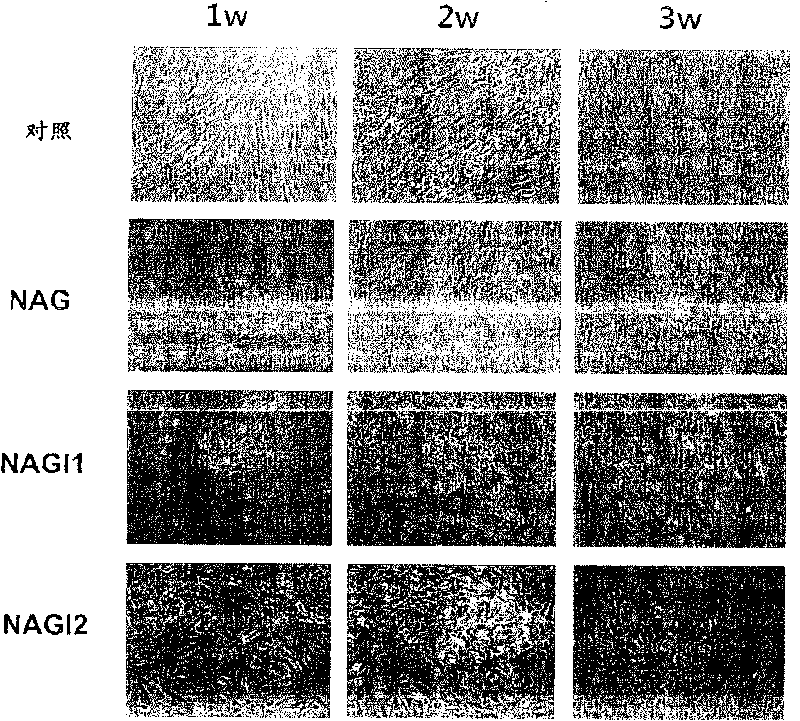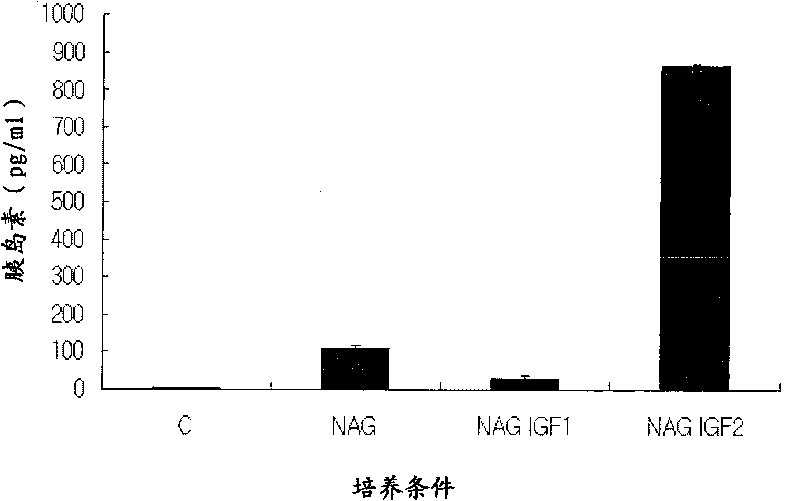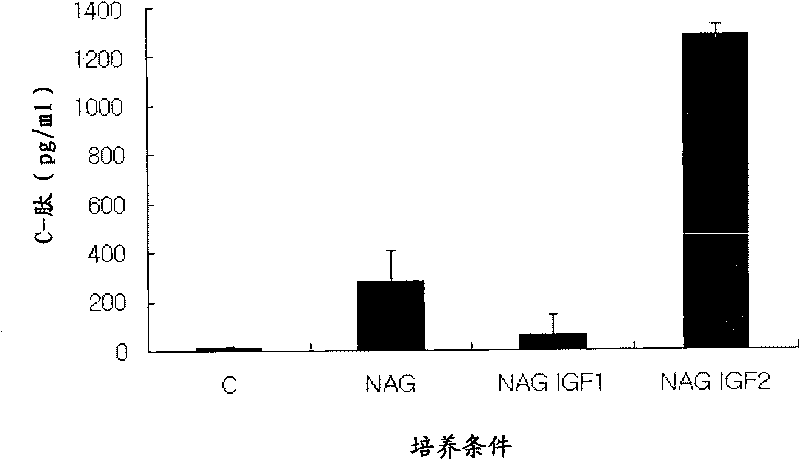Method for the differentiation of human adult stem cells into insulin-secreting cells
A technology of adult stem cells and insulin secretion, applied in the directions of insulin, chemical instruments and methods, biochemical equipment and methods, etc., can solve problems such as difficulty in using embryonic stem cells to treat diabetes
- Summary
- Abstract
- Description
- Claims
- Application Information
AI Technical Summary
Problems solved by technology
Method used
Image
Examples
Embodiment 1
[0039] Example 1 Separation of Stem Cells
[0040] The adipose tissue surgically dissected from the subcutaneous layer around the eyes in a plastic surgery hospital was treated with 0.075% type 1 collagenase solution at 37°C for 30 min, and then supplemented with the same volume of collagenase solution with Medium with fetal bovine serum terminates enzyme activity. After centrifugation, the cell pellet thus formed was washed twice with medium and incubated in DMEM-LG supplemented with 10% fetal bovine serum.
Embodiment 2
[0041] Embodiment 2 stem cell culture
[0042] The obtained stem cells were cultured for 21 days in a differentiation induction medium. For this, first, the cells were divided into 5 × 10 3 Cells / well density were seeded in collagen-coated 48-well plates to which was added 25 mM glucose supplemented with 10% fetal calf serum, 4 nM activin prior to incubation (for 7 days). A. Medium (DMEM-HG) with 10 nM glucagon-like peptide-1 and 20 ng / ml fibroblast growth factor-2. Thereafter, the cells were incubated with 5.5 mM glucose supplemented with 10% fetal bovine serum, 10 mM nicotinamide, 4 nM activin A, 10 nM glucagon-like peptide-1, and 50 ng / ml insulin-like growth factor-1 or insulin-like Growth factor-2 medium (DMEM-LG) was further cultured for another 14 days.
[0043] During the incubation period, the medium was replaced with fresh medium every 3-4 days. After a total of 3 weeks of incubation, cells were examined for differentiation as follows.
Embodiment 3
[0044] Morphological changes of cells after differentiation in embodiment 3
[0045] Stem cells were isolated from the subcutaneous fat around the eyes and cultured to monitor their morphological changes. Although morphologically unchanged after incubation in growth factor and cytokine-free media, when they were treated with growth factors and / or cytokines such as nicotinamide, activin A and glucagon-like peptide-1 or When treated with IGF-1 or -2, it was observed that the stem cells underwent a morphological change into a round shape ( figure 1 ). After 3 weeks of differentiation induction, the cells became rounded in morphology and formed cell clusters.
PUM
 Login to View More
Login to View More Abstract
Description
Claims
Application Information
 Login to View More
Login to View More - R&D
- Intellectual Property
- Life Sciences
- Materials
- Tech Scout
- Unparalleled Data Quality
- Higher Quality Content
- 60% Fewer Hallucinations
Browse by: Latest US Patents, China's latest patents, Technical Efficacy Thesaurus, Application Domain, Technology Topic, Popular Technical Reports.
© 2025 PatSnap. All rights reserved.Legal|Privacy policy|Modern Slavery Act Transparency Statement|Sitemap|About US| Contact US: help@patsnap.com



